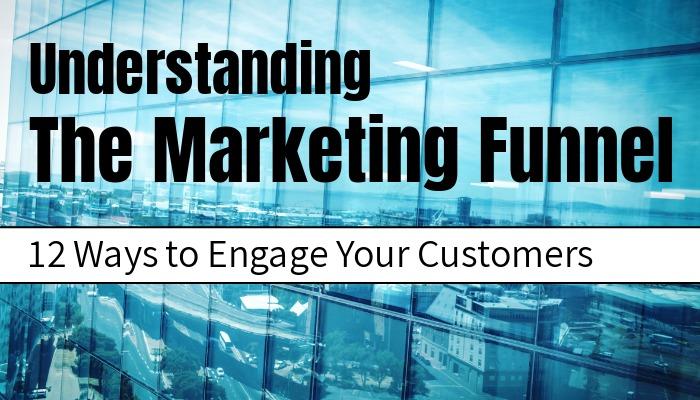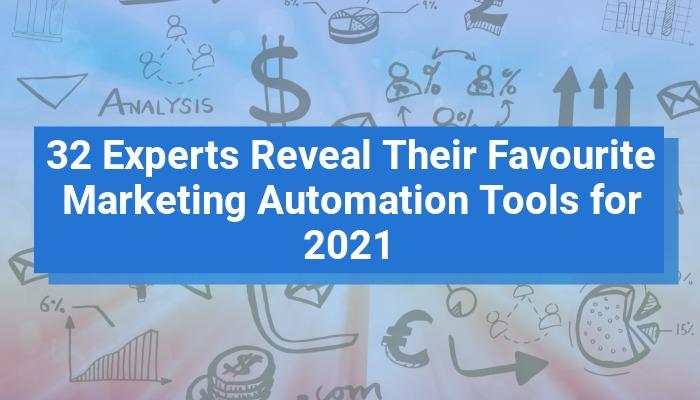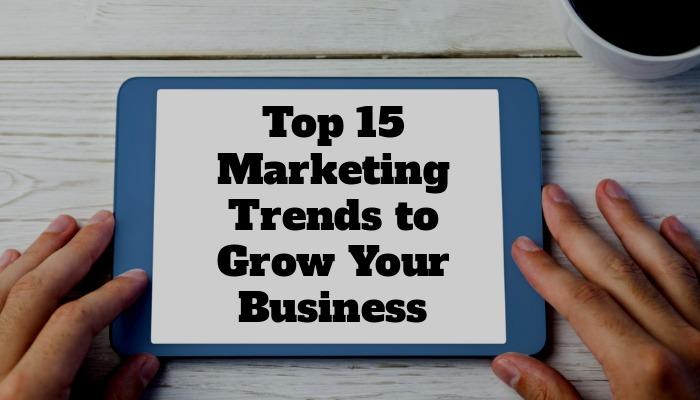Understand the marketing funnel to improve your marketing strategy and engage customers with the right type of content throughout the stages of their journey towards conversion. Foster brand loyalty and advocacy and grow your business by creating campaigns that take customers beyond the funnel.
The marketing funnel essentially encompasses the three stages customers go through from when they find out about your brand until purchasing a product or signing up for your services. You can use it to guide your strategy, as thinking about the top, middle, or bottom of the funnel helps you identify the mindset of your target audience and adapt your content to it.
Table of contents:
- ● What is a Marketing Funnel?
- ● How Does a Marketing Funnel Work?
- ● Top of the Funnel (TOFU): Awareness
- ● Optimize Your Content for SEO
- ● Build Awareness with Paid Advertising
- ● Increase Trust with Regular Social Media Activity
- ● Middle of the Funnel (MOFU): Consideration
- ● Craft a Lead Magnet
- ● Be Authentic with Testimonials
- ● Improve Trust with Success Stories
- ● Bottom of the Funnel (BOFU): Conversion
- ● Include Tutorial Content to Show Expertise
- ● Ensure a Smooth Customer Journey
- ● Offer Incentives Through Email Marketing
- ● And Beyond: Fostering Brand Advocacy
- ● Provide Rewards for Customer Loyalty
- ● Launch Referral Campaigns
- ● Run Upselling or Cross-Selling Campaigns
What is a Marketing Funnel?

A marketing funnel is a visualization of the stages customers go through on their journey from becoming aware of your brand to a purchase or any other final action you want them to take. This helps marketers to have an overview and plan their marketing efforts to attract leads, engage prospects, and convert customers.
The funnel is often based on the AIDA formula, which stands for Awareness, Interest, Desire, and Action. But this can be simplified into these three stages:
- Top of the funnel (TOFU)
- Middle of the funnel (MOFU)
- Bottom of the funnel (BOFU)
The three stages take you from awareness to consideration to conversion. Another stage that can be added after the bottom of the funnel is anything to do with brand advocacy and techniques to get returning customers.
How Does a Marketing Funnel Work?

Depending on your business, the campaigns you use at each stage of the marketing funnel to draw in your target audience differ. The theory is that your potential customers move through the funnel from top to bottom but that’s not quite what happens in reality.
As a marketer, you have to be prepared for people entering at different stages and jumping back and forth between them. You need to ensure your ad and brand messages are clear across all your channels and provide the content that best suits the stage your potential customer is currently in.
Top of the Funnel (TOFU): Awareness

The top of the funnel is where your potential customers become aware of your brand, products, or services. This is where they find out about you for the first time and the content you produce as well as the marketing techniques you use should be geared towards attracting attention.
At this stage, your potential customer has just realized they have a problem they want to find a solution for. In an initial search for a product or service that resolves their need, most scan different options rather than go into more in-depth research.
The content you could produce to attract initial attention could be:
- Blog posts
- Ads in digital or print format
- Engaging social media posts
- Infographics that introduce your brand
- Podcasts that show your industry expertise
To make your business stand out as a viable option, use the following techniques:
Optimize Your Content for SEO

At the top of the funnel, people often get started by gathering information with a few quick searches on Google. To make your potential customers aware of you in this awareness stage, it’s crucial to have an online presence and rank high on search engine results pages. Optimizing your content is key to ranking among the first few organic results potential customers look at.
Finding out what your target audience is looking for when they come across your brand through keyword research is your starting point. Use this knowledge to create informational and unique content that helps your website visitors understand what benefits your business provides.
You’ll automatically use the keywords that also tell the search engine algorithm how valuable your blog posts and landing pages are. With a solid content strategy, you can provide what your audience is looking for in an easy-to-find and understandable way.
In order to manage all these operations there is a complete tool, which allows you to intervene on every piece of content published or even at a planning stage: it is called SEOZoom and is a young SEO suite in continuous growth, with features that allow you to identify the search intent of all kinds of content, to use an editor with real-time suggestions to write optimized articles, predict seasonal keywords and plan a better strategy on a monthly basis and, more generally speaking, to discover weaknesses in published content and SEO issues such as content cannibalization and waste of crawl budget.
Link-building efforts to create a stronger link profile for your website also help with visibility on search engines. Search engine bots also look out for high-quality backlinks to your site to determine whether your website is a valuable resource. Collaborations like guest posting, distributing infographics, or being a guest on a podcast are just a few examples of how to get other businesses to link back to you.
Build Awareness with Paid Advertising

To get a quicker return on investment, consider paying for advertising space. From traditional print advertising like billboards, magazines, or direct mail to pay-per-click (PPC) campaigns on Facebook or Google, paid advertising is a good way to make as many people in your target audience aware of your business as possible.
Create compelling print ads with eye-catching designs and captivating copy to lead potential customers to your call to action. Make it clear what the action is you want them to take and where they can find out more. QR codes with links to your brand’s website and social media channels are a handy way to direct them further down the funnel.
Paid ads can give you better visibility on Google, as they display before any of the organic results. At the top of the funnel or awareness stage, users of search engines or social media platforms don’t know what your business does yet. It’s crucial to be clear about your unique value proposition and keep it simple to stop them from scrolling to the next ad on the results page or posts on their feed.
Increase Trust with Regular Social Media Activity

If customers are checking out your social media profiles, they’re probably well on their way towards the middle of the funnel or consideration stage. This makes it even more crucial to impress them while they’re still only becoming aware of you.
Create an excellent first impression and project trustworthiness with a solid social media presence. The key here is to provide high-quality content frequently. Your organic social media posts should be engaging and encourage likes, comments, and shares from your followers that you respond to.
When potential customers see this in the awareness stage, they’ll trust your brand more because they perceive that your business interacts with and cares about their customers. Social media can be overwhelming but if you narrow down the channels you’re using to where your audience is and dedicate enough resources to it, your socials will thrive.
Middle of the Funnel (MOFU): Consideration

The middle of the funnel or the consideration stage is where people look into your business more in-depth to see if you provide the solution they’re searching for. They become leads that can be easier to target than people in the awareness stage.
When leads enter the middle of the funnel, they want to learn more about your product but aren’t ready to commit to anything yet. Your content should highlight how your products or services are beneficial to them and provide more clarity on why your brand is what they were looking for.
The types of content to look into for the middle of the funnel stage are:
- E-books or other educational resources like cheat sheets or guides
- A testimonial or an interview with a customer
- Case studies
- Product comparisons
- A webinar to demonstrate your products or services and answer questions
To convince leads that your business is the best option for them, try these marketing techniques:
Craft a Lead Magnet

A lead magnet is a piece of content that you give away in exchange for your leads’ contact details. This usually works through a contact form your target audience fills out to download your free lead magnet.
Whatever your lead magnet is, it should be a valuable and informative piece that shows your expertise and gives your audience a taste of your products or services. What you produce depends on your type of business, your resources, and the target audience it’s aimed at.
Consider these factors when you determine whether you’re going to work on an e-book, cheat sheet, template, or guide. Once you’ve got a substantial list of people signed up to receive news from you through your lead magnet, send them more content through email marketing campaigns to lead them further towards the bottom of the marketing funnel.
Be Authentic with Testimonials

Authentic testimonials from previous customers can be what sways your leads one way or the other. A slideshow or carousel of reviews on your website or social media builds trust, as many leads in the consideration stage are weighing their options and want to be sure they’re safe with your business.
They want to know that other customers had positive experiences before them and won’t be running into trouble when buying from you. In the B2B marketing space, it’s beneficial to provide case studies with companies or clients in the field to emphasize successful projects.
With most business and transactions conducted online rather than in-store, digital word of mouth through reviews on Google or Trustpilot are ways that your target audience is highly likely to seek out. Next to reviews on these platforms, you can also add any certifications to your website that let visitors know they shop safely with your business.
Improve Trust with Success Stories

The middle of the funnel is very much about comparison, which means your leads want to know in more detail about previous experiences of customers with your business. Providing testimonials and staying on top of managing reviews is crucial to have control over what prospective customers see and read about you.
The best resource you can provide on your own website are success stories and case studies of happy customers. As a good starting point, provide your favorite testimonials as a slideshow on your home page. You can link to more information from there.
As soon as you have a collection of testimonials, success stories, and case studies, be sure to use them for awareness campaigns. For example, share quotes from customers in visually appealing posts on social media and link back to your website where your followers can read more.
Bottom of the Funnel (BOFU): Conversion

At the bottom of the funnel or in the conversion stage, your goal is to convert prospects. You’ve attracted attention and built a relationship with your potential customers. To finally get them to buy from you, convince them that you’re the right choice over your competitors. It’s time to give clear and specific reasons why your business is the best choice.
Prospects are nearly ready to buy at this stage and just need a nudge in the right direction. Despite this situation being so close to a sale, remember that a direct sales pitch is not necessarily the best strategy here. Remind yourself that this is about showing how your solution can help customers with their problems.
The content you provide at the bottom of the funnel should reflect this and can take shape in the following forms:
- Free trials or demos
- Tutorial-style videos to show how your product or service works
- How-to guide articles that resolve any uncertainties
- Feature and price comparisons on a separate landing page
- Segmented email marketing campaigns with relevant content and special offers
To convince potential customers that your products or services are the right ones for them, provide these types of content:
Include Tutorial Content to Show Expertise

At the bottom of the funnel, you need to nurture your prospects with relevant content that helps them to understand what you offer better. One of the best types of content here is anything that explains your products or services in more detail.
Keep this type of content simple but informative. You don’t want to overwhelm your audience but you want to provide enough information to entice them towards conversion. Tutorial content can take many shapes. From blog posts to YouTube videos to live demos, find what fits best with your resources and your business.
Showcase how your products or services work and highlight features that are great benefits for customers. Talk about your unique value proposition and what you do better than other companies in your field.
Ensure a Smooth Customer Journey

Make sure the journey your customers undertake is a smooth one wherever they enter the marketing funnel. Your content should direct them towards the bottom of the funnel and it should always be obvious how to take action and make a purchase.
This means you need a straightforward and user-friendly buying process particularly online. Navigating your website to sign up for a service or adding products to a cart should be a simple process. If not, site visitors get frustrated and look for easier options with competitors.
Content can help here in the form of an FAQ page or step-by-step guides on product pages. Look for common questions that come up from customer support or on social media to create landing pages or guides that help.
Offer Incentives Through Email Marketing

As soon as customers have signed up to receive emails from your business, they’ve expressed an interest in your products or services. This makes email marketing an effective method to communicate with your audience and get relevant content and offers directly delivered to their inboxes.
Reach out frequently with helpful information, discounts, and other perks for subscribers like giveaways. Even more direct techniques for a bottom-of-the-funnel campaign are calls to action that link to booking a demo or signing up for a free trial.
To create incentives, understand what you can offer that customers want. Make it easy for them to take advantage of your special offers and remind them about any expiration dates. This way, you avoid any confusion about how long they can redeem a discount and create a sense of scarcity that entices them to buy.
And Beyond: Fostering Brand Advocacy

Marketing funnels often end at the conversion stage or bottom of the funnel, but getting customers to buy from you once doesn’t have to be the end goal. Your aim for customer acquisition should go beyond a one-time purchase. Use various marketing techniques to create repeat customers that recommend your brand to their friends and family.
When you achieve this you’ve turned your customers into brand advocates. It’s important to keep them happy after their purchase and make customer service a priority in your processes. Reward those who recommend your business to others for their loyalty. Build relationships that keep them from wandering off to one of your competitors.
Explore these types of content to build trust and retain customers:
- Flyers with discount codes
- Landing page with information about your referral program
- Coupons
- Email with upselling or cross-selling information
- In-app tutorials
To give your customers incentives and entice them towards brand advocacy, use one or more of the below techniques in your campaigns.
Provide Rewards for Customer Loyalty

Rewards make your customers feel valued and give them an incentive to buy from you again. If you keep increasing their motivation to buy from you like this, they’ll eventually turn into loyal customers. Having a plan for customer retention in place is a cost-effective strategy, as it requires less of your budget to keep existing customers than what you spend on chasing new ones.
Through loyalty programs, your customers enjoy the perks of sticking with your business and eventually prefer buying from you. Establishing a certain level of customer loyalty doesn’t have to mean an increased workload for your team.
With automatic rewards on certain purchases, you can focus more of your energy on getting new customers while current customers are kept happy. For example, your automated thank you email could contain a discount code for the next purchase.
Launch Referral Campaigns

With a referral campaign, you encourage that invaluable word of mouth and get your customers to refer your business to their friends and family. This usually works through an incentive you offer for the recommendation. Your existing customers get something in return for new customers signing up or buying from you because of a referral.
For a referral campaign to work, know what’s valuable to your customers and offer rewards for both sides. Provide clear incentives for both the person who refers you and the new customer who signs up as a result of a recommendation. Make it a user-friendly process without any complicated hurdles to get to the reward.
Keep explaining the benefits of a referral and how this helps you to provide a better service. Ensure you keep track of your brand advocates and referred contacts in your company’s CRM to fully integrate the referral process in your marketing efforts.
Run Upselling or Cross-Selling Campaigns

To get the most out of your customers, encourage them to upgrade or buy other products from you that could be relevant to them. If they enjoyed one of your products or services, they might like to try another that they don’t know about yet.
Upselling or cross-selling campaigns are about offering more information and an incentive to buy more. When you’re upselling, you try to get customers to buy a more profitable product or service in your range. Cross-selling can be used to suggest additional products or services that are also relevant to them.
Keep customers interested by showing them how they can further benefit from sticking with your business. Once you’ve piqued their interest and provided excellent customer service, they’re more likely to become brand advocates.
Using the marketing funnel can help you with planning your strategy, as it gets you thinking about your target audience’s needs. What they require and what encourages them to buy from you differs according to where they enter the funnel.
At the top of the funnel, potential customers are only becoming aware of you. Here, all your efforts should go towards brand awareness and an overview of what you offer. In the middle of the funnel, more in-depth information on benefits and displaying happy customer experiences entice them further down the funnel. At the bottom stage, make sure you provide incentives that encourage your leads to take action and finally become customers.
Ensure the actions you want your customers to take are simple with a user-friendly buying process. Once they’ve completed that, take your happy customer beyond the funnel. Offer rewards or run upselling campaigns to eventually turn them into brand advocates that refer your business to friends and family.

Elisabeth Strasser
Having graduated with a Professional Writing MA with distinction, Lizzie set out to gain her copywriting and digital marketing experience in Cork City.
An Austrian with a love for Ireland, Lizzie loves exploring Irish folklore and storytelling. Her favourite DW tools are: Youtube Outro Maker and Add Logo to Video tools.


